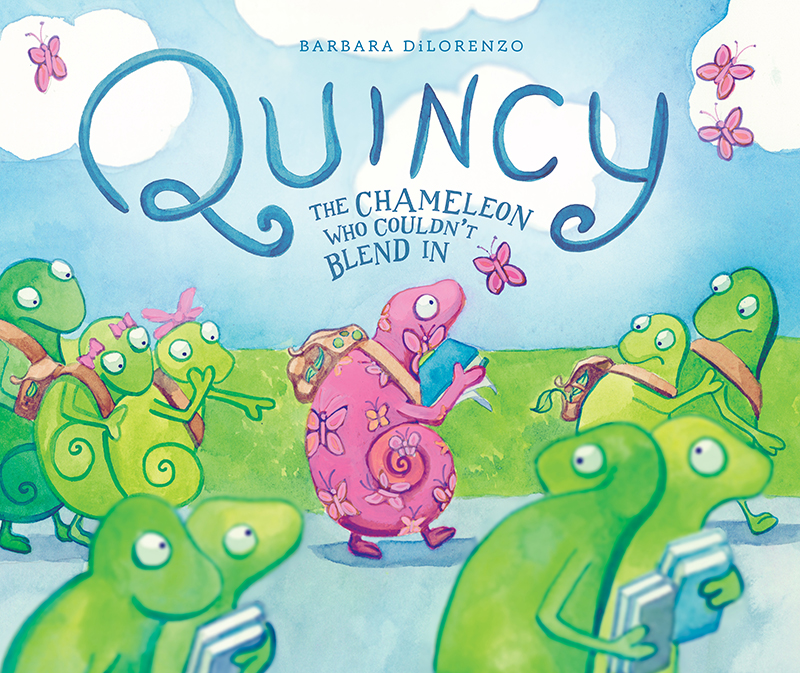 We love Quincy, the story of a chameleon who can’t seem to blend in! To celebrate Quincy’s book birthday, we chatted with author/illustrator Barbara DiLorenzo. Barbara shared some fantastic art and stories about other people who struggled to blend in – you can see it here. And don’t miss this Quincy coloring sheet.
We love Quincy, the story of a chameleon who can’t seem to blend in! To celebrate Quincy’s book birthday, we chatted with author/illustrator Barbara DiLorenzo. Barbara shared some fantastic art and stories about other people who struggled to blend in – you can see it here. And don’t miss this Quincy coloring sheet.
1. When did you first realize you wanted to be a writer and illustrator?
In the summer between 7th and 8th grades, my mother and I took a summer class at the Montserrat College of Art on children’s illustration. The teacher was paper artist Giles LaRoche–who is still making great books today! After that class, I was inspired by what I had learned, and by watching my mother, Lenice Strohmeier, navigate her path to publication. She worked for years on her art and her writing and was rewarded with two books published by Marshall Cavendish. Seeing the difficult journey and the payoff, I knew not only that I wanted to be an author and an illustrator, but also that it was possible despite the odds.
2. How did you come up with the idea for Quincy?

As a student in elementary school, I was always a bit different than the crowd. Students in the main social circle weren’t mean to me–something that I felt was important to keep intact in Quincy. They just didn’t understand me. I didn’t even understand me. My brain just worked differently, and when I spoke, strange things came out. Although they didn’t bully me, I could read social cues well enough to know that me being on the fringe was probably best for everyone. However, I wasn’t alone in the periphery of the popular people. I had a small group of funny and adventurous friends that were a lifeline in those early years. This seemed essential to Quincy’s story–not everyone has to understand you, just a few people that a part of your tribe.
3. What’s your favorite part of Quincy?
I’m so glad that no one edited out the potty-humor page! Seven-year-old me is proud that remained intact in the story. It’s not gratuitous. I wanted to put poor Quincy into the most awkward situation to highlight his problem. Standing on stage, with a bit of stage fright, with all your thoughts popping up on your skin–and trying not to think about needing to pee–it just felt like a perfect elementary school meltdown. Thank goodness our thoughts don’t really show up on our skin!
4. What do you like to do when you’re not writing or illustrating?
I love teaching art to people who think that they aren’t talented. When I hear someone say that they just weren’t given that gift, I start plotting how to help them see that the skills are learnable. It’s my greatest joy when a student becomes proud of their own work. That’s why the language of Mrs. Lin in the book stresses how hard Quincy is working on his art, instead of his talent alone. I couldn’t draw anything as a young person–until my obsession with horses had me reading about them and drawing them until I finally, finally got better. This is what I share in author visits at schools–if a person wants to be seriously creative, all it takes is patience and practice. And never giving up.
5. What was your favorite book to read as child?
The Trumpet of the Swan by E.B. Lewis was my favorite novel. The focus on Sam connecting with a mute swan to help him overcome his challenges really made an impact on me. But I was also a HUGE fan of James Marshall’s collection of books about The Stupids. I guess I loved and still love books that have heart, and books that are funny and absurd.

